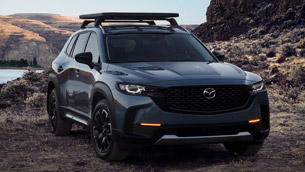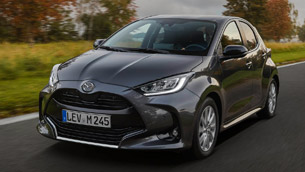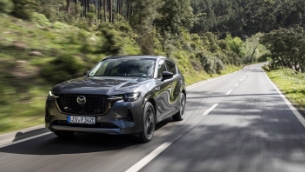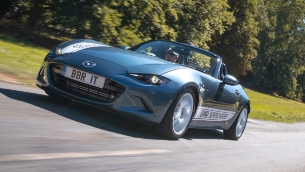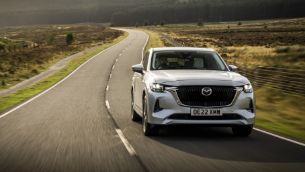Mazda to cut vehicle fuel consumption 30 percent by 2015.
Mazda Motor Corporation has announced that it is setting its sights on reducing the fuel consumption of Mazda vehicles sold globally by an average 30 percent by 2015. This determined commitment will entail a holistic approach which includes using lightweight technologies, the upgrade of almost all of Mazda's gasoline engines, introducing a Smart Idle Stop System, a new gasoline rotary engine and new diesel engines worldwide. By 2015, Mazda will have renewed almost its entire powertrain lineup and, from 2011, through steadily developing safe, lightweight, new generation platforms aims to reduce the weight of its new vehicles by 100 kilograms or more.
Mazda is driven by its long-term vision to provide all its customers with first-rate environmental and safety features as well as driving pleasure. This means that Mazda owners are assured of driving cars that continue to provide the fun-to-drive feeling that will keep them coming back for more, while still having the peace of mind that their Mazda is environmentally-friendly and safe to drive.
But, this focus on the environment is not a new concept for Mazda. In the seven years from 2001 to 2008, the average fuel economy of Mazda vehicles sold in the Japanese market increased by approximately 30 percent. In 1991, the company embarked on a long-term project to develop vehicles powered by hydrogen technology, thereby participating in the search for sustainable transportation solutions, which still continues today.
Mazda saw its hydrogen powertrain efforts progress positively forward in June 2008 when the Mazda5 Hydrogen RE Hybrid received the green light from the Japanese government to begin testing on public roads. The Mazda5 Hydrogen RE Hybrid (known as the Premacy Hydrogen RE Hybrid in Japan) offers 40 percent more power and an extended hydrogen driving range of 200 kilometers. It will be available for commercial lease in Japan during the 2008 fiscal year. And, Mazda is already progressing well with the development of an all-new Hydrogen RE vehicle with dynamic performance equivalent to a 3.0-liter gasoline engine and a hydrogen range of 400 kilometers.
The next technological milestone for Mazda will be the introduction of the mass production version of its proprietary Smart Idle Stop System into one of its cars in 2009.
Mazda's is the only idle stop system in the world that restarts the engine from idle by injecting fuel directly into the cylinder and igniting it to force the piston down, enabling a fast and quiet restart as well as an improvement in fuel economy by up to seven-to-eight percent. Demonstrating the extent of Mazda's flexible R&D capability in developing alternative environmentally-friendly technologies, the system will initially appear in Japan and Europe; however, it will be rolled out worldwide.
Mazda's future powertrain line-up has much to excite current and future Mazda customers. In 2009, an E85 fuel-compatible flex-fuel engine will be introduced into the Northern European and North American markets. From 2011 onwards, with new gasoline engines will incorporate next generation Direct Injection Spark Ignition and other systems to boost power by 15 to 20 percent and improve fuel economy by approximately 20 percent.
Beginning in 2011, Mazda plans to introduce new diesel engines worldwide that meet the strictest future exhaust gas regulations in each market. These engines will feature next generation direct injection technology, turbocharging systems and NOx reduction technology, which will enhance fuel economy by 20 percent and produce cleaner exhaust gases, while still providing a true Zoom-Zoom experience.
A fundamental part of Mazda's heritage, the gasoline rotary engine, will be substantially upgraded in the early 2010s. Currently referred to as the 16X, the next rotary engine will offer substantially improved performance and economy through use of Direct Injection Spark Ignition and high-speed combustion technology, enfolded in new rotary dimensions.
Mazda's environmental efforts are not only focused on its cars. The plants in which they are built have also received a lot of attention to ensure that they contribute to a sustainable future.
In FY2007, the volume of CO2 emissions from production activities in Japan was reduced by 15.4 percent compared to FY1990 levels. Expressed as CO2 emissions volume per unit of revenue, the reduction was 24 percent.
In 2005, Mazda was the first auto manufacturer to introduce a Three Layer Wet Paint System which reduces VOC emissions by 45 percent and CO2 emissions by 15 percent. Mazda now plans to introduce a more advanced version of this unique Paint System in 2009 as it finalizes the development of an innovative water-based paint technology that reduces VOC emissions by a further 57 percent without increasing CO2 emissions. Producing around 25 percent fewer CO2 emissions than common water-based paint, this new technology is intended to make Mazda's paint shops the cleanest in the world.
Mazda is also making itself known in the area of carbon neutral bioplastics. Developed in collaboration with government, industry and academia, Mazda intends to expand the applications of this new source of eco-friendly material. Already, bioplastics are used in the new Mazda5 Hydrogen RE Hybrid and, in June 2008, Mazda commenced the Mazda Bioplastic Project to develop a bioplastic made from non-food-based cellulosic biomass. The project aims to have the bioplastic ready for use in vehicles by 2013.
